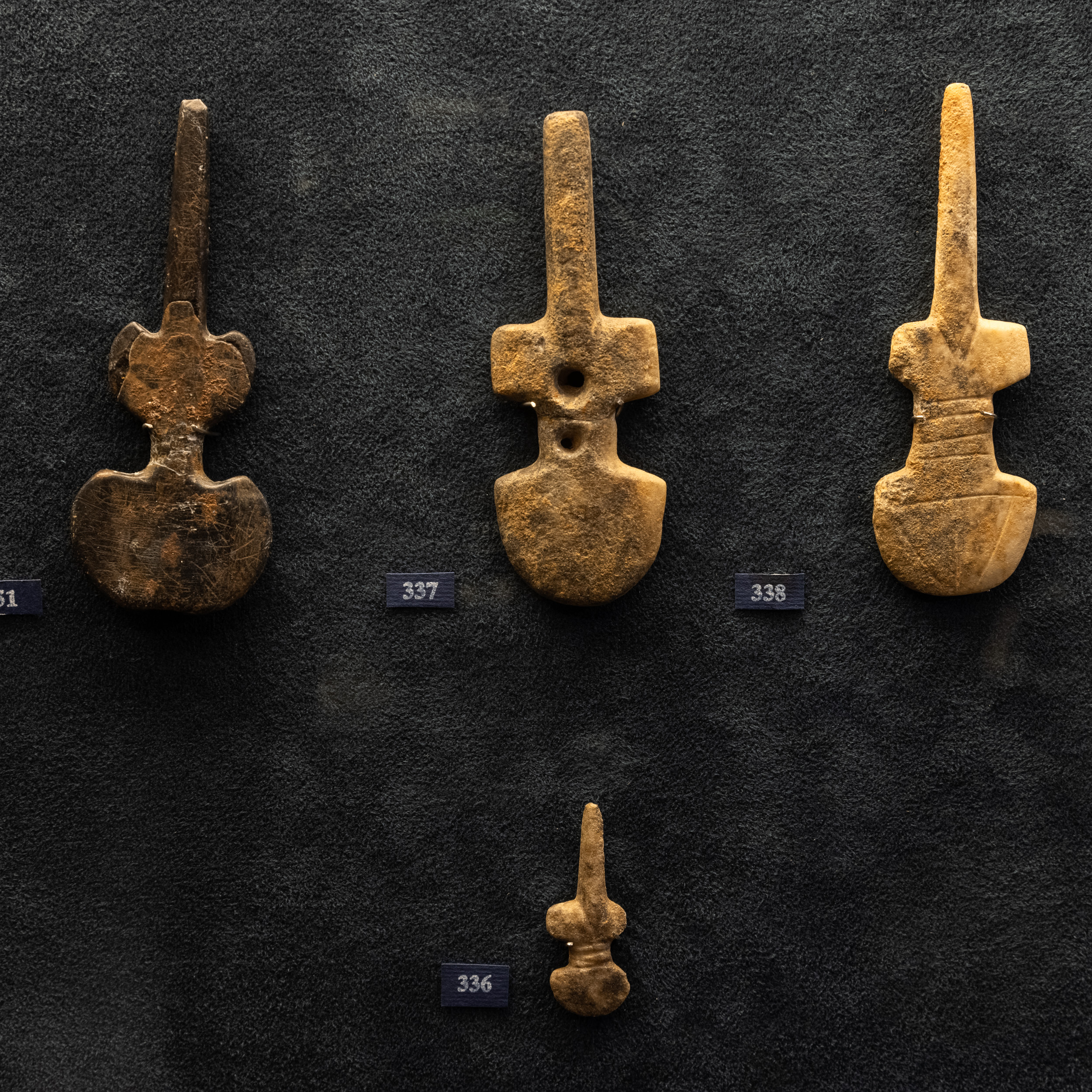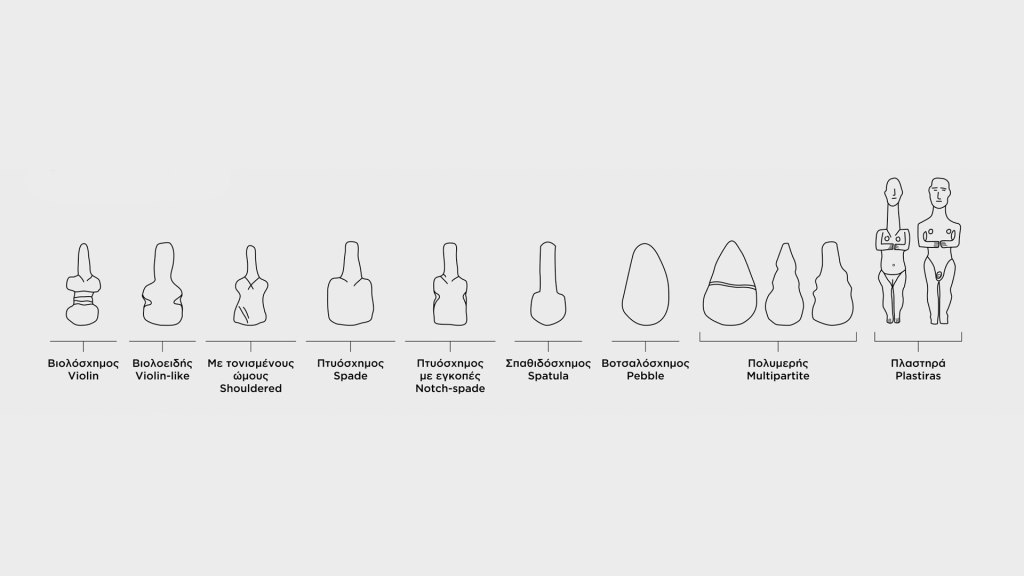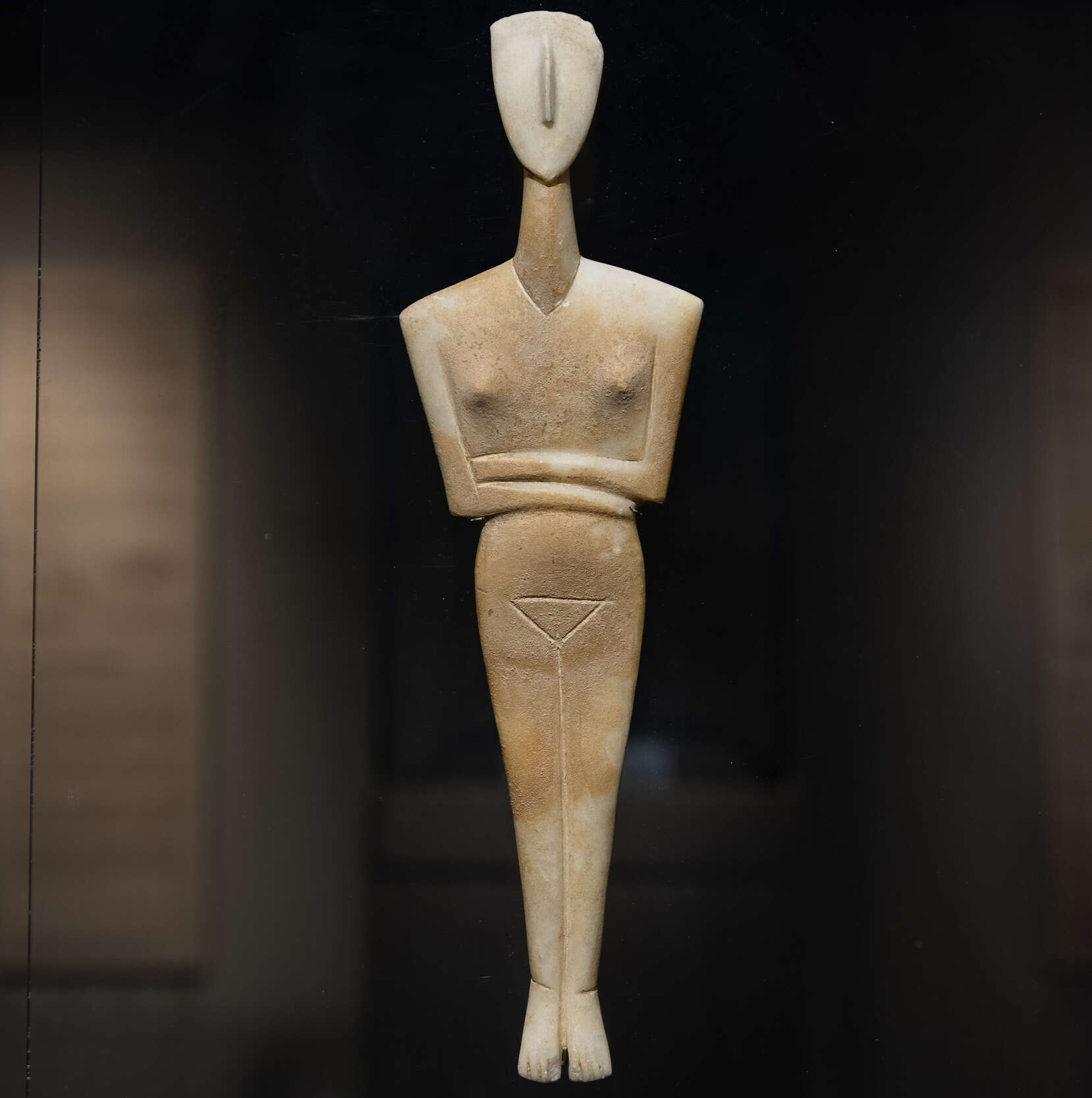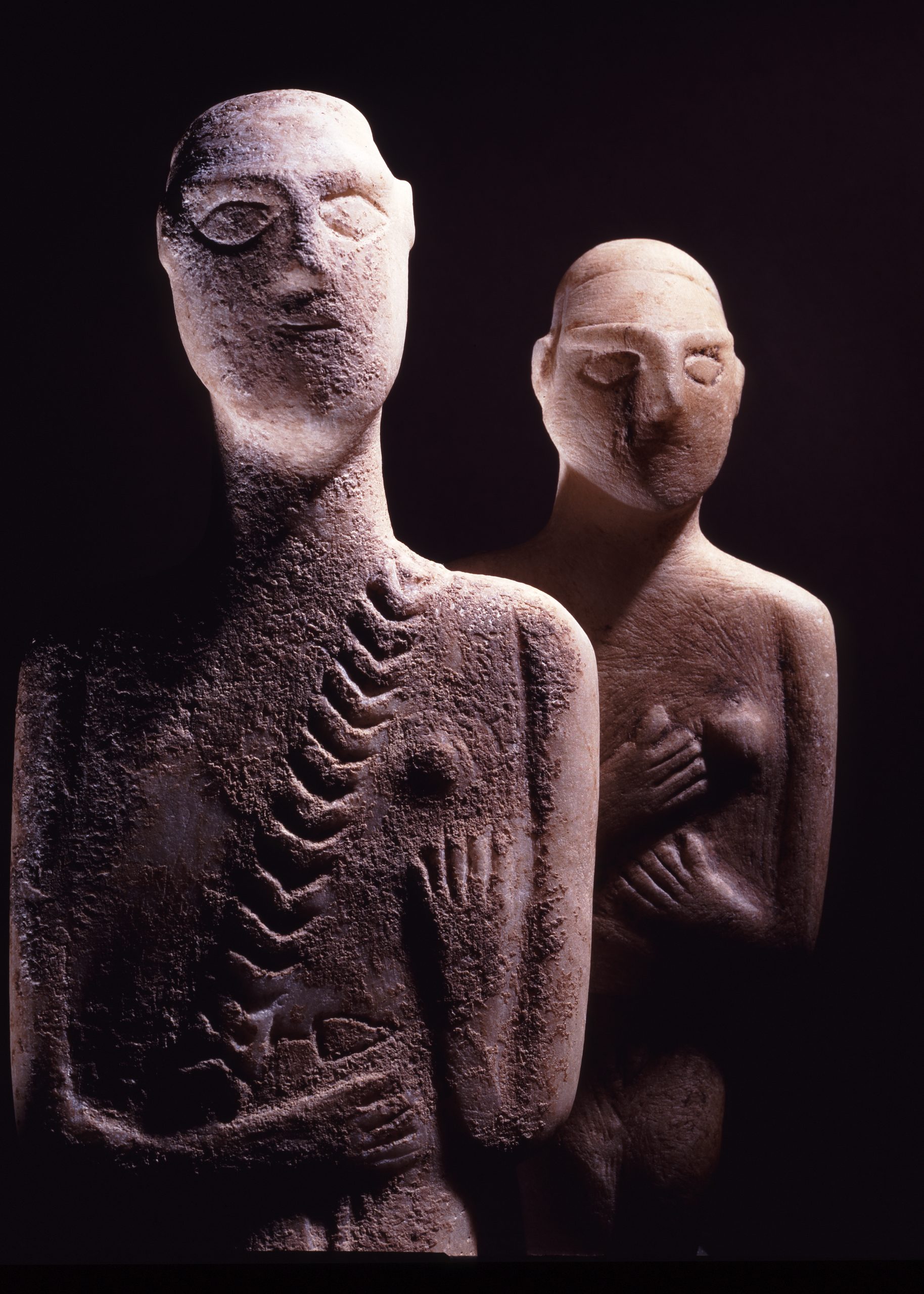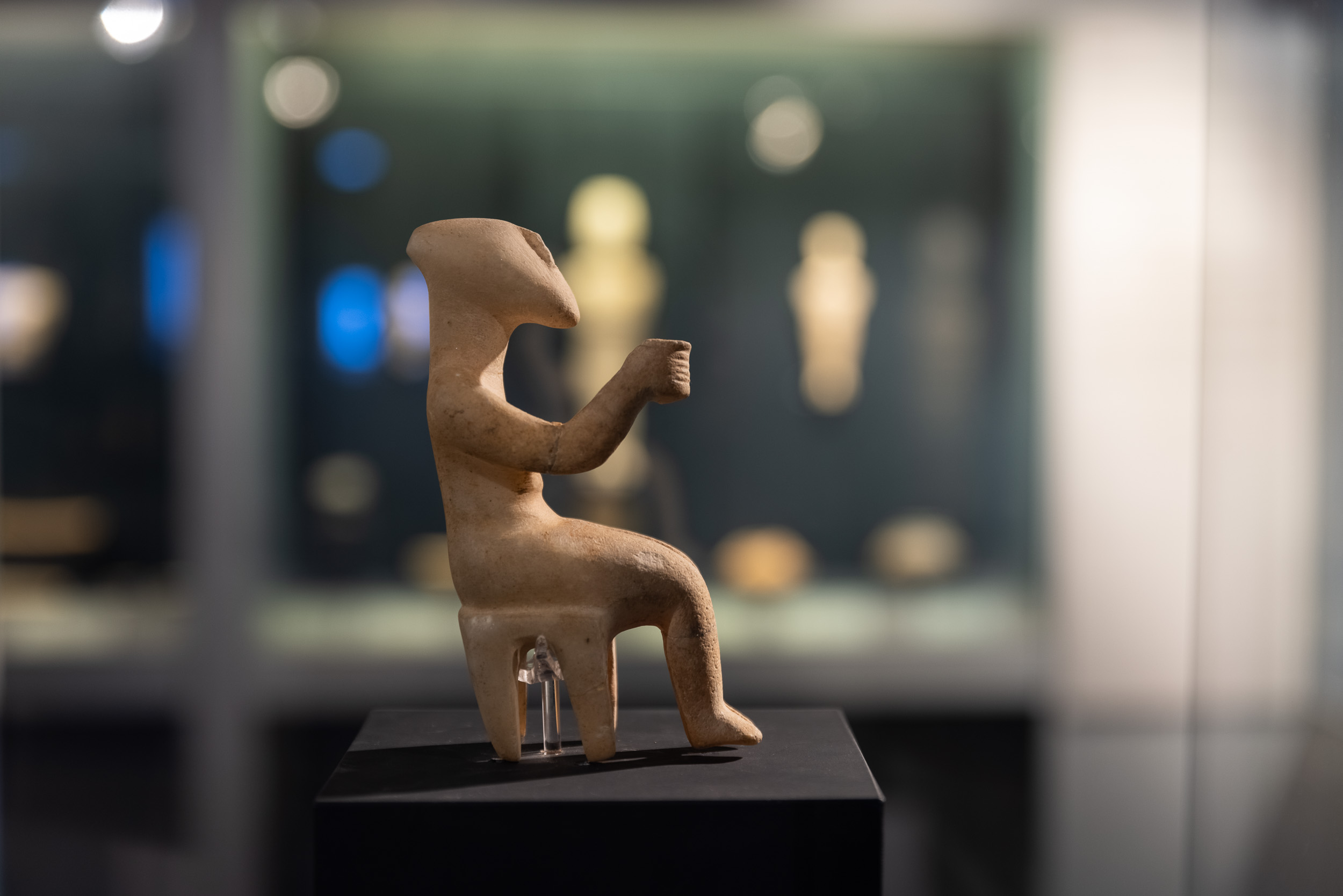The human form in Cycladic Art
CYCLADIC ART

EARLY CYCLADIC I PERIOD
Marble figurines are the most impressive creations of Cycladic culture, and Cycladic figurines of the Early Cycladic period fall into two main categories: schematic and naturalistic.
The most common type of schematic category – characteristic to the Early Cycladic I period (3200 – 2800 BC) – is the violin-shaped figurine. The name refers to the shape, and we know that such figurines represent females. These figurines are usually small – rarely exceeding 15-20 centimeters. Other than the schematic figurines, we have several examples of artifacts that depict the human form in a more naturalistic way. The naturalistic figurines of this period include, for example, the so-called Plastiras type (named after the homonymous Early Cycladic cemetery on Paros).
TRANSITIONAL EARLY CYCLADIC I/II PERIOD
The Cycladic sculptors of the Transitional Early Cycladic I/II period (2800 – 2700 BC) are characterized by their strong tendency for experimentation. This phase includes intermediate types of figurines that fall somewhere between the schematic and the naturalistic styles; the Louros type is just one of these examples and is named after an extremely rich tomb at the site of Louros Athalassou on Naxos.
The hybrid type, which usually combines elements of earlier types, was also present in this period. Additionally, in the same period, there is another type of figurine – the so-called pre-canonical – which foreshadows the later forms of the following period.
EARLY CYLADIC II PERIOD
The following Early Cycladic II (2700 – 2400/2300 BC) period is characterized by the works of the canonical type, which maintain consistent styles and artistic conventions. The canonical type was the most common category of marble figurines produced at the peak of Cycladic art and culture. Most figurines of the canonical type represent nude females with folded arms (the left arm was always placed over the right arm) and pronounced anatomical features, such as the breasts and the pubic triangle.
The figurines of this type are found in six different varieties, each with its own characteristics and a name derived from the sites of five Early Cycladic cemeteries: Amorgos (Kapsala and Dokathismata varieties), Naxos (Spedos variety), Syros (Chalandriani variety), and Crete (Koumasa variety – which was encountered in Crete, so scholars believe that that they were created on the island, based on Cycladic models). While most of the figurines are small – not exceeding 60 centimeters in height – there are also some larger figures – up to 1.50 meters high – that can, therefore, be considered as prehistoric statues. The production of Cycladic figurines decreased dramatically and almost ceased by the end of the Early Cycladic II period.
TRANSITIONAL EARLY CYCLADIC II/III PERIOD
The figurines created in the Transitional Early Cycladic II/III period (2400 – 2300 BC) do not follow the rules and conventions that were used in the Cyclades for about five centuries.
These figurines are known as post-canonical, as they are characterized by the abandonment of the “canonical arrangement” of the forearms, the crude and concise rendering of individual anatomical details, and the rendering of the hair and facial features in relief and by incisions.
EARLY CYCLADIC III PERIOD
During the Early Cycladic III period (2300 – 2000 BC), the schematic figurines of the Phylakopi I and Ayia Irini types become widespread throughout the Cycladic islands. This period represents the demise of marble carving – a practice that gradually declined and, by the end of the 3rd millennium BC, was abandoned.
FIGURINES “OF SPECIAL FORM”
Some Cycladic marble sculptures exhibit elaborate compositions that escape the strict frontality of the common types and conquer the third dimension. The male figure (which was rarely depicted in Cycladic art) usually appears in a seated position – as in the figurines of musicians – flute-players or harpists – which date to the early phase of the Early Cycladic II period. Male figurines are also sometimes depicted as hunters/warriors, dating to the end of the same period or to the Transitional Early Cycladic II/III phase. The known examples of male figures of the canonical type with folded arms are extremely rare. Additionally, few examples of the Plastiras type from the Early Cycladic I period represent male figures in a pose similar to that of the female figures.
Lastly, there is a small number of unusual examples of various groups of figures (e.g. “double” figurines with one female standing on top of larger one, compositions of two male figures holding a small female one, and compositions of two figures holding each other from the shoulder), which are dated in the early phase of Early Cycladic II period.
PROVENANCE AND USE OF FIGURINES
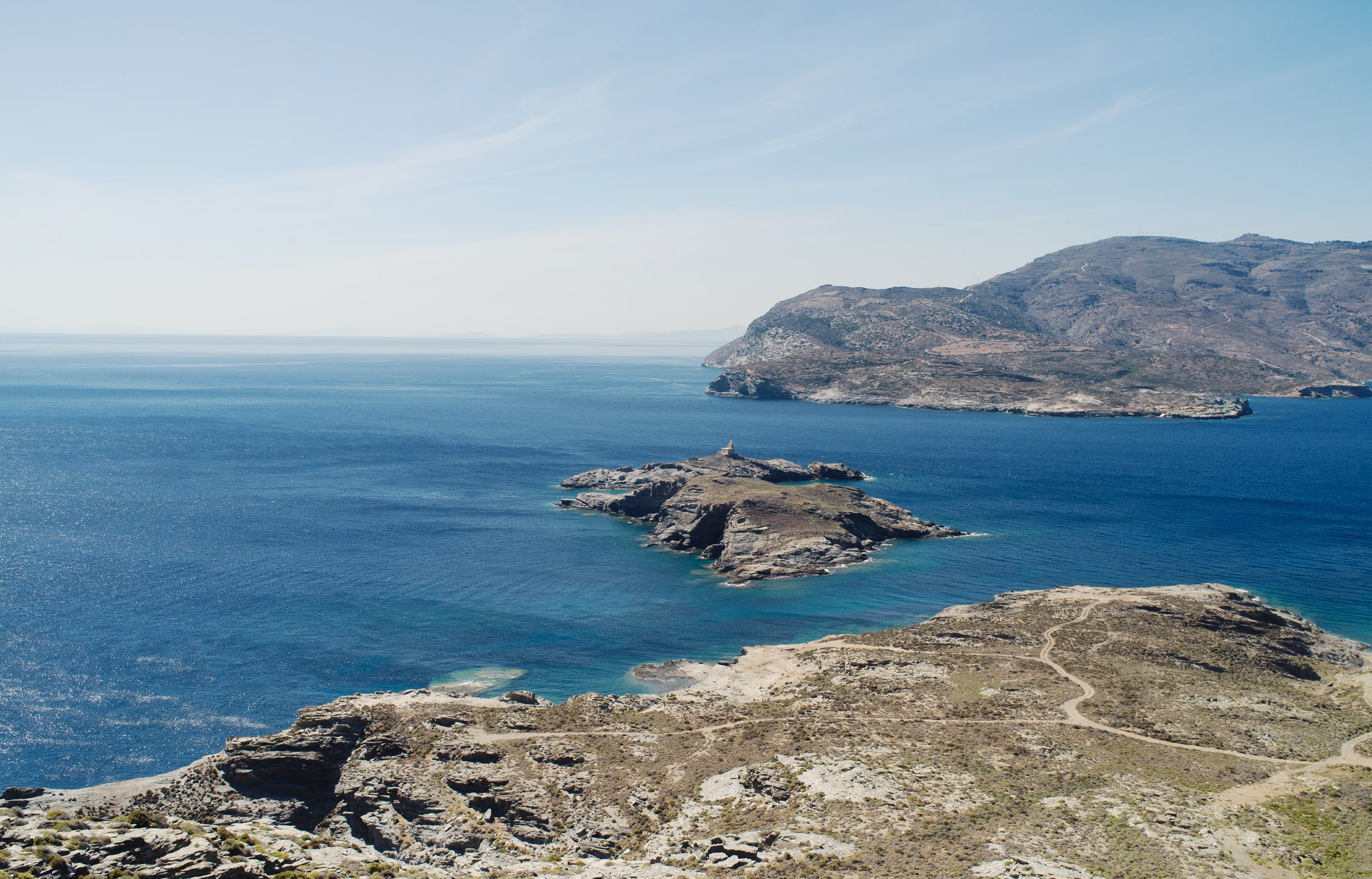
The provenance of most Cycladic figurines is unknown, since they have been unearthed by illicit diggers. The majority of the figurines recovered through systematic archaeological excavations come from graves, which has led many scholars to interpret them as objects of religious or ritual use.
However, the fact that only a small number of Cycladic graves contained such figurines, in addition to the discovery of some figurines in settlements or other non-funerary contexts, suggests that their function may have been more complex and varied.
